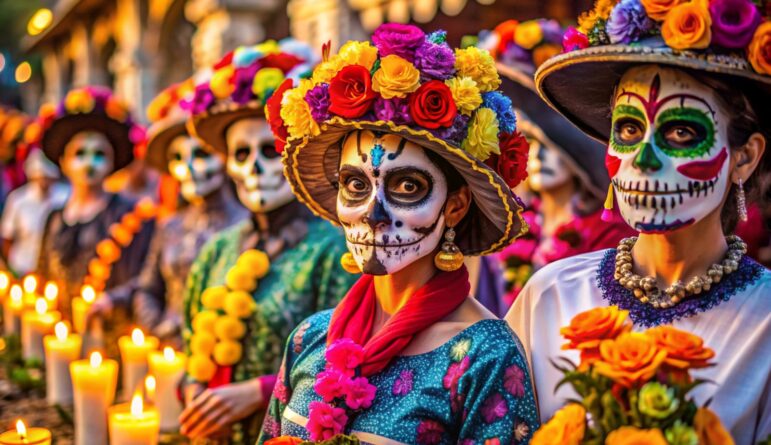
Dia de los Muertos, or Day of the Dead, is a vibrant Mexican holiday that takes place on November 1st and 2nd. Deeply rooted in indigenous and Spanish traditions, this festival celebrates the lives of loved ones who have passed away. Rather than mourning, Dia de los Muertos embraces death as a natural part of life. Families welcome the spirits of the deceased back into their homes, honoring them with beautifully crafted altars (ofrendas), festive decorations, and joyful gatherings.
Though it is called “Day of the Dead,” the holiday is filled with life and color. It’s an occasion to remember, celebrate, and connect with the spiritual world. The altars families create are adorned with photographs of the deceased, marigolds (Cempasúchil), candles, and the favorite foods of those being remembered. This act of remembrance invites the spirits to return and reunite with their loved ones for a brief time. The idea is that death is not to be feared, but embraced as a continuation of life’s journey.
To truly experience Dia de los Muertos, there are several key symbols and traditions that you should know:
One of the most recognizable symbols of the holiday is the sugar skull. Decorated with colorful icing and intricate designs, sugar skulls represent the dead, both in a playful and respectful manner. These skulls can be made from sugar or clay and are often placed on altars or given as gifts.
Known as the “flower of the dead,” marigolds play a central role in Dia de los Muertos. The bright orange petals of the marigold are thought to guide the spirits back to their altars. Their vibrant color and strong scent make them perfect for leading the way.
A special bread known as Pan de Muerto is baked specifically for Dia de los Muertos. This sweet bread, often shaped like bones, is dusted with sugar and shared among family members during the celebrations. It symbolizes the circle of life and is another offering placed on the altar.
Dia de los Muertos is celebrated in many parts of the world, particularly in regions with strong Mexican or Latin American communities. Whether you’re attending a large parade or participating in a more intimate family gathering, this holiday provides a chance to reflect on the beauty of life and death. From traditional face painting to lively music and dancing, the festive atmosphere makes Dia de los Muertos a unique and enriching cultural experience.
If you’re eager to experience Dia de los Muertos firsthand, many cities in Mexico and the U.S. host lively events. Large cities like Los Angeles, Mexico City, and San Antonio often have parades, festivals, and altars open to the public. Be sure to check your local listings for Dia de los Muertos celebrations near you.
For more information on where to find the best Dia de los Muertos events, visit Explore Dine Play and discover recommendations tailored for your area. Celebrate this meaningful tradition and explore the rich cultural heritage it embodies!
This blog post is proudly sponsored by KactusJock, your go-to shop for unique southwestern gifts and products. Celebrate life and heritage with their amazing selection of authentic items!